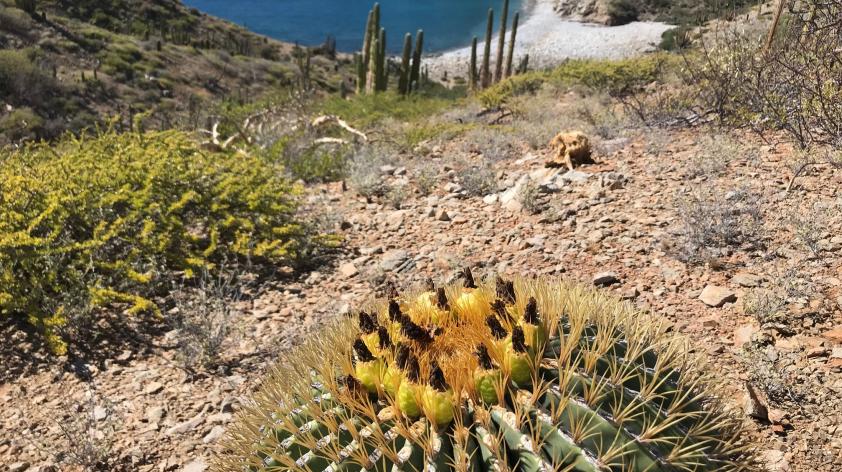
Seed collecting on the islands in the Gulf of California
In November, I joined an adventurous expedition to the southern islands of the Gulf of California. The expedition left Cabo San Lucas on the Searcher, a 98-foot vessel weighing almost 100 tons, which was to be our home for the next 13 days.
The group was under the leadership of Dr. Exequiel Ezcurra, Director of the University of California’s Institute for Mexico and the US, and aimed to visit as many islands as possible in the southern archipelago. The expedition consisted primarily of botanists, but included ornithologists, herpetologists, mammologists and entomologists from both the U.S. and Mexico.
My main goal, working with Dr. Jon Rebman, Curator of Botany at the San Diego Natural History Museum, was to collect seed from as many of the rarest and most narrowly endemic plants as possible.
This was easier said than done, not least because on many days the wind blew so strongly that sea conditions made landing on the islands very challenging and limited our options for where to visit. Several of the islands were also very dry, not all had received the recent rainfall, and plants were often dormant and/or sterile.
Although a full blog could be written about each of the species we were able to document and collect, one of the highlights for me was the first plant we found.
On November 10, we landed at a sheltered harbor near the gypsum mine on San Marcos Island and found Gossypium armourianum, a wild species of cotton that is considered endemic to the gypsum outcrops here and on the adjacent peninsula outcropping. We were elated to find our target plant on a hill above the town, and reclaiming a slope that had previously been heavily impacted by the gypsum mining. The plants grew around knee height with beautiful yellow flowers.
We took DNA samples from 15 plants and mapped the local population. We were disappointed to not find any fruit, but to my great surprise, in the afternoon when we got back to the large canyon further north where many of the group had gone, the cotton was also there! These plants were huge in comparison, maybe 6 feet tall, with some old seed pods still intact. We made another DNA collection and the best seed collection we could.
After that there were several days with no collections due to bad weather, dry islands, few endemic species, etc.
But upon arriving at Santa Catalina Island, the barrel cactus (Ferocactus diguetii ssp. catalinense) I sought to collect was visible from the boat!
The island is a glorious cactus forest with majestic rises, the bluest bays and inlets and nicely spaced burseras and other pleasant-smelling plants. I set to work collecting cactus fruits, with the help of many of expedition companions. It reminded me how wonderful it is to be in the field with so many brilliant and like-minded people. I collected seed from 30 plants and rested on a ridge with a view down to the next bay. The gorgeous view and sense of accomplishment minimized the annoyance of the biting flies.
The extrafloral nectaries (glands that produce nectar but aren’t part of a flower) on the cacti are big and beautiful and ants seem to be the main predator the plants are attracting to defend them with these nectaries. The flowers are small and pink with beetles and bees visiting them. The fruits seem to emerge beyond the spines when ripe, and not before.
The growing tip, or meristem, is well protected by dense spines and a cephalium (brightly colored bristly structure). The plants are up to 15 feet tall and up to ~3 feet diameter. I collected the seeds with tweezers and gave only a little blood to my cause.
Later that afternoon we found several other target species including Salvia platycheila, Marina catalinae, Mandevilla hespera, and Alvordia glomerata ssp. insularis, collecting seed and DNA samples as quickly as we could!
Santa Cruz also proved to be a productive island, as well as Cerralvo, and eventually we made 18 unique seed collections over the course of the expedition. The seeds were sent to the National Seedbank in Mexico City, and the DNA samples and population data were brought back to San Diego for future analysis.
The expedition has put us well on the way to learning more about and preserving these unique Baja California plants.













